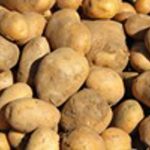Idaho’s congressional delegation has written an email to the US Department of Agriculture, insisting that they push Japanese officials to purchase fresh potatoes. Japan is the top exporter of frozen US potatoes. However, the ban prohibits US producers of potatoes from selling fresh potatoes even after decades of negotiation.
Sam Eaton, the vice director of legal affairs at the Idaho Potato Commission, explains that the ban on fresh potatoes for trade is a sensitive political issue’. Eaton explained that, it is a matter of concern to the Japanese government, it’s safeguarding its farmers locally and ensures that the fresh potato imports out of the US are safe from bugs or disease.
In 2022, the exports of potatoes from the US have surpassed the record $2.1 billion worth of sales. The figure could add an additional 150 million in the event that Japan was to allow its market to new US potatoes, as per the National Potato Council.
Based on the Idaho Potato Commission The Idaho Potato Commission estimates that about 5 percent of the potatoes that are produced in Idaho exports The top destinations to purchase fresh Idaho potatoes are Canada, Mexico, Malaysia and Singapore. The US is already exporting fresh potatoes to Indo-Pacific such as South Korea, Taiwan, Hong Kong, Singapore, Indonesia and Indonesia, Philippines, Malaysia and Thailand.
Source: potatonewstoday.com
